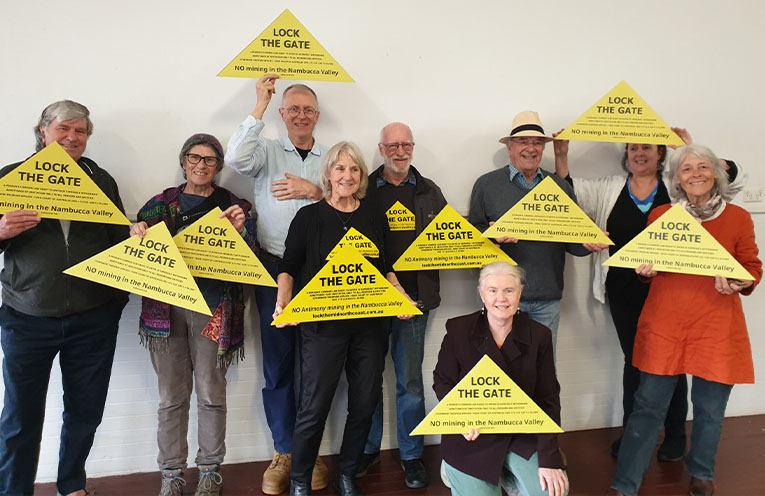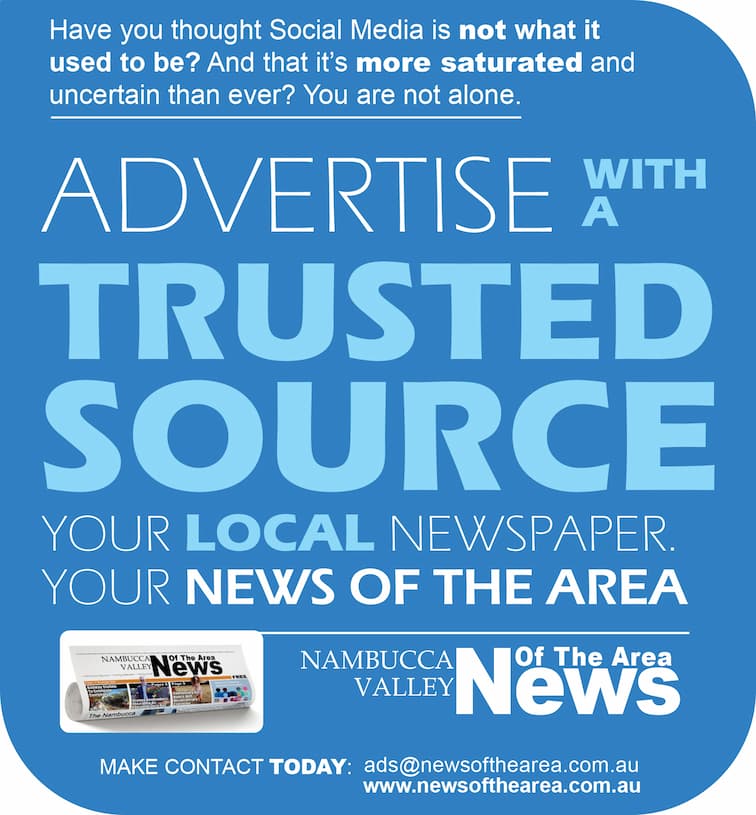
LOCK the Nambucca Valley (LNV) will host an information session covering critical mineral exploration in the region at Taylors Arm Hall on Saturday, 30 August.
A number of mining exploration license applications (ELA) currently exist over areas of the Nambucca Valley, including Taylors Arm.
The prospecting company behind the applications, Trigg Minerals, is attempting to explore the potential of the region for antinomy mining.
“Despite the area’s historical mining activity, modern systematic exploration has been limited,” the Trigg website states.
“Trigg Minerals aims to revitalise the Taylors Arm South Project through comprehensive data compilation, remote sensing, and geophysical surveys.
“The objective is to delineate new zones of mineralisation, assess metallurgical characteristics, and evaluate the economic viability of future mining operations.”
A metallic element which occurs in nature as the mineral stibnite (Sb2S3), antimony (Sb) compounds show toxic properties similar to those of arsenic.
It is a valuable component in various manufacturing processes such as flame retardants, lead-acid batteries, and semi-conductors, as well as in solar panels, glass manufacturing, and military technologies like missile guidance systems, night vision equipment, and nuclear weapons.
The value of antimony skyrocketed to a 40-year high in April, due to limited global supply, Chinese export restrictions and increased military activity around the world.
Lock the Nambucca Valley spokesperson Georgette Allen says landholders need to “remain vigilant” to the threat of mining exploration in the region.
She invites all local residents to attend the Taylors Arm meeting.
“This is an opportunity to learn about antimony mining exploration and ask your questions on how this exploration can impact our communities,” she said.
“The greatest concern is the threat of pollution of our waterways.
“Given the high rainfall events in our area, tailings dams cannot be guaranteed.
“All of this pollution could contaminate the Nambucca River, affecting fisheries, oyster farms, and our drinking water supply.
“The negative impacts on community health and natural environment of antimony mining are well documented, for example the $10m publicly-funded remediation project at Urunga to deal with toxic waste from antimony processing there.”
Afternoon tea will be provided at the meeting, which commences at 2pm.
For further information visit www.vallarural.net or email lockthenambuccavalley.sec@gmail.com.



